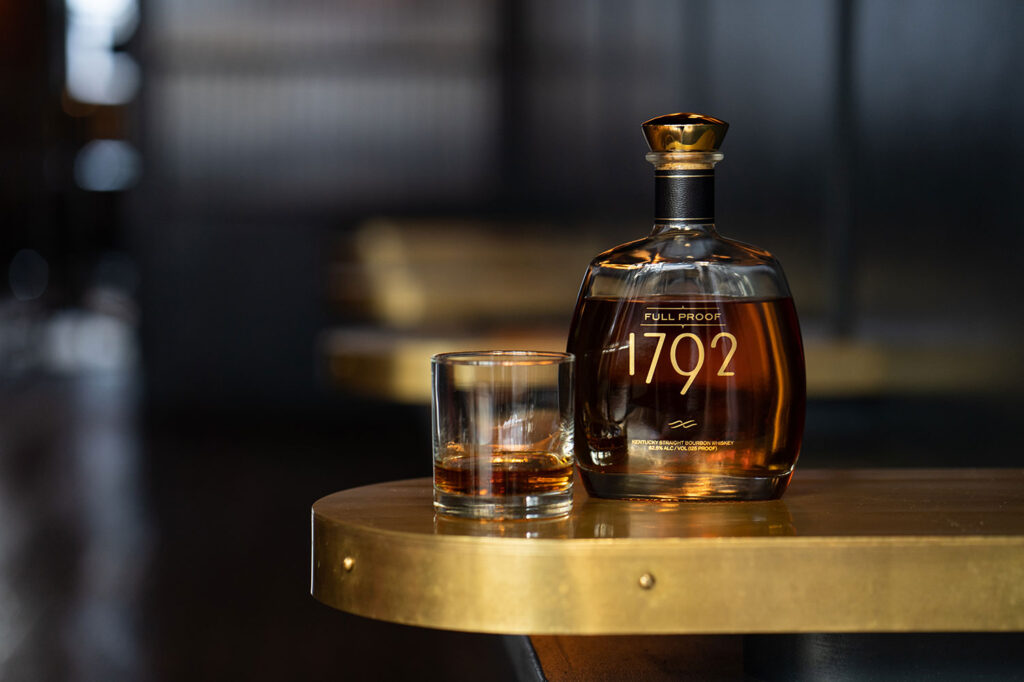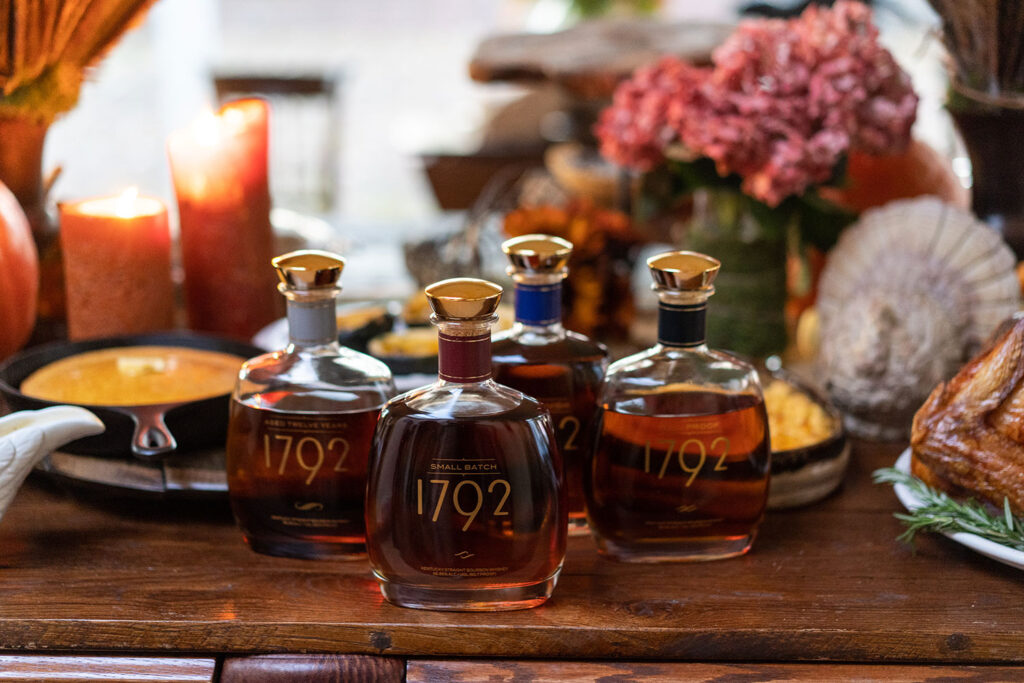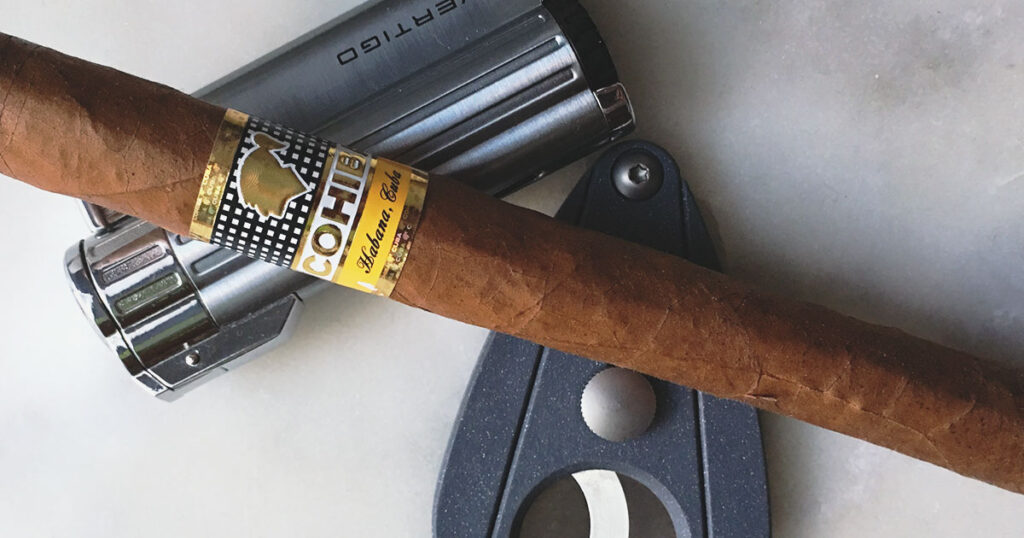You can tell a lot about a man by the way he tastes his bourbon. (No, that isn’t the start of some chest-puffing boast to identify one way as “right”.)
Some hurry through a bourbon skipping past the taste to get right into the belly. Others mix bourbon in cocktails to enjoy a combination of flavors and aromas with their drink. Still more sip and savor every drop, neat or on the rocks, as if their bourbon is, in fact, nectar for the gods.
Regardless of where on the spectrum your bourbon tasting falls, or if you are new to the spirit, there are several facets to bourbon tasting a gentleman should understand.
It’s not how you drink it, but that you drink it
Bourbon whiskey is unique to America. In fact, it can only be American, much like Scotch can only come from Scotland. To be bourbon, the mash must be from at least 51 percent corn. The other grains are some combination of malted barley and either rye or wheat.

The distilled liquid must age in charred, new, white oak barrels. There are maximums and minimums on the proof, or alcohol content, of the spirit coming off the still, going into the barrel and going into the bottle.
Age has a profound effect on bourbon. That’s how long it stays in those barrels, weathering varying winters and summers. The heat and cold coax the whiskey’s dance with the wood — a dance that produces the color and flavor you enjoy.
Contrary to popular misconception, bourbon doesn’t have to come from Kentucky, though 95 percent of it does. This is because the limestone-rich riverbeds there produce certain acid levels in the water. The idyllic pH balance going in helps the mash cooking, fermentation process and aging.
The geography of bourbon gives it an interesting camaraderie. Many of bourbon’s most notable distillers and personalities, in fact, know or knew each other. Some even went to the same schools or churches.
As the saying goes:
“We don’t care how you drink your bourbon. Just that what you’re drinking is bourbon.”
Some bourbon aficionados might turn up their nose at bourbon in a cocktail. Many will discourage you from doing bourbon shots. After all, there’s as much nuance and sophistication in the spirit as one may find in wine or brandy. Taste it. Consider it. Savor it.
Discerning bourbon drinkers recognize everyone has different tastes. And everyone prefers their bourbon differently. Those bourbon drinkers will help guide you to find yours.
How To Do A Bourbon Tasting: General Rules Of Thumb
Bourbons contain nuances. Every spirit is slightly different. The taste can vary based on everything from the types of grains used in the mash bill to the time spent aging in the barrel.

(And no, bourbon doesn’t continue to age in the bottle. However, prolonged exposure to sunlight or temperature extremes may make a bottle go bad.)
Higher proof bourbons may be your favorites. But lower proof versions of the same spirit can also have unique characteristics.
Bourbon Tasting Tips To Keep In Mind
To taste bourbon properly, there are a few general guardrails to respect:
- The first sip is a bad indicator. Bourbon is at least 40% alcohol. Let your tongue warm up to the heat before making a decision. The third sip is a more appropriate place to judge.
- A true taste means smelling and tasting the bourbon. It also means chewing the liquid around your whole mouth, observing where you sense specific flavors, heat and reactions. So shy away from a gulp or quick sip.
- Cleanse your palate with water between tastes. Even the slightest remnant of the previous bourbon can throw your reaction off.
- Always try lower proof to higher proof. If you start with high proof, your taste buds may have nothing left for the others.
Bourbon Types, Families and Expressions
There are essentially two types of bourbon: rye and wheat.
The difference between rye and wheat bourbon
Rye bourbons are more common. Made with rye grains in the mash bill, these tend to create more tones of spice and even dryness in a whiskey. You’ll often hear sophisticated palate-possessors describe ryes with words typically reserved for nuts and plants.
Wheat bourbons use a softer, sweeter grain. Many wheat tastings include descriptions of fruit, syrups and caramels.
Taste 1-2 rye bourbons next to 1-2 wheat bourbons to get a feel for the differences. Make note of your preferences, but keep in mind it’s not a competition. There are different bourbons for different occasions.

You can also explore different families of bourbons
These are various brands that come from the same distillery, or even company. The Barton 1792 Distillery, for example, produces 1792 Bourbon. The Buffalo Trace Distillery is its sister distillery.
So Buffalo Trace, Eagle Rare and others are from the same family, though each has its own flavor profile. Many bourbons have different ingredients, approaches and characteristics, but share master distillers and facilities.
The different expressions (flavors) of bourbon
Finally, you should explore bourbon brands with different expressions. Sometimes called flavors, these variations on a brand’s recipe or process produce interesting alternatives.
Small Batch is the flagship expression for 1792 Bourbon. Its Full Proof expression earned World Whisky of the Year honors from Jim Murray’s Whisky Bible in 2020.
The brand also offers six other limited edition expressions, including Sweet Wheat, Single Barrel, Port Finish and Bottled in Bond.
The Tastes of Bourbon Neat, On the Rocks or in a Cocktail
The discerning gentleman understands there is no such thing as a favorite bourbon. There are only favorite bourbons.
The connoisseur should have a favorite bourbon to sip, one to mix and one to share.
You may enjoy lower proof or sweeter, wheat bourbons in a cocktail or highball for something light. You may also prefer something with higher proof and age on a chilly night by the fire. The bourbon explorer will seek out the right expression to fit with various foods, climates and occasions.
All this is only possible when you truly taste bourbon.
As you do so, make notes of the aromas and flavors each brings to your palate. Study the mouthfeel, body and aftertaste. Notice the impact on your throat and belly as well as that upon your tongue.
A bourbon tasting shouldn’t be quick or fleeting. It is an experience to be enjoyed.
You will come across one that you’ll never forget and describe in infinite detail to friends for ages. And the more you stop, taste and savor, the more you can be satisfied that you indeed have a taste for bourbon.
Editor’s note: Thanks to our friends at 1792 Style for partnering with us on this article! 1792 Style is the online magazine companion to 1792 Bourbon. It publishes articles for the man with discerning tastes several times per week. Elevate your style, fashion, home décor, accessories and, of course, taste in bourbon at style.1792bourbon.com.

